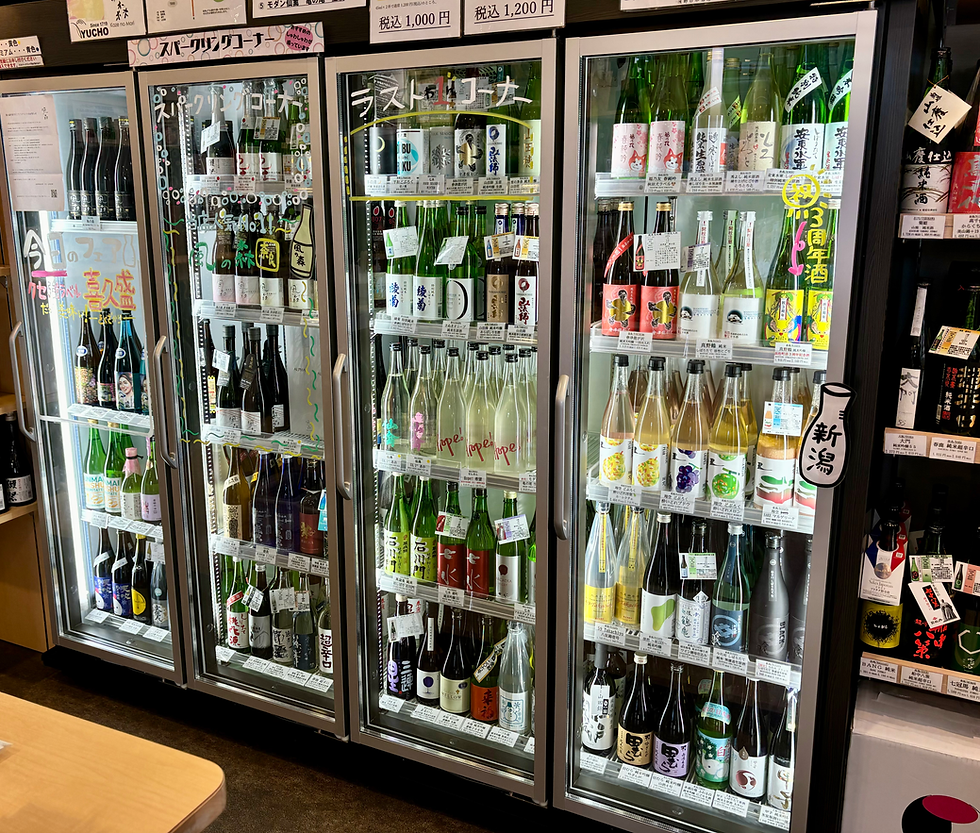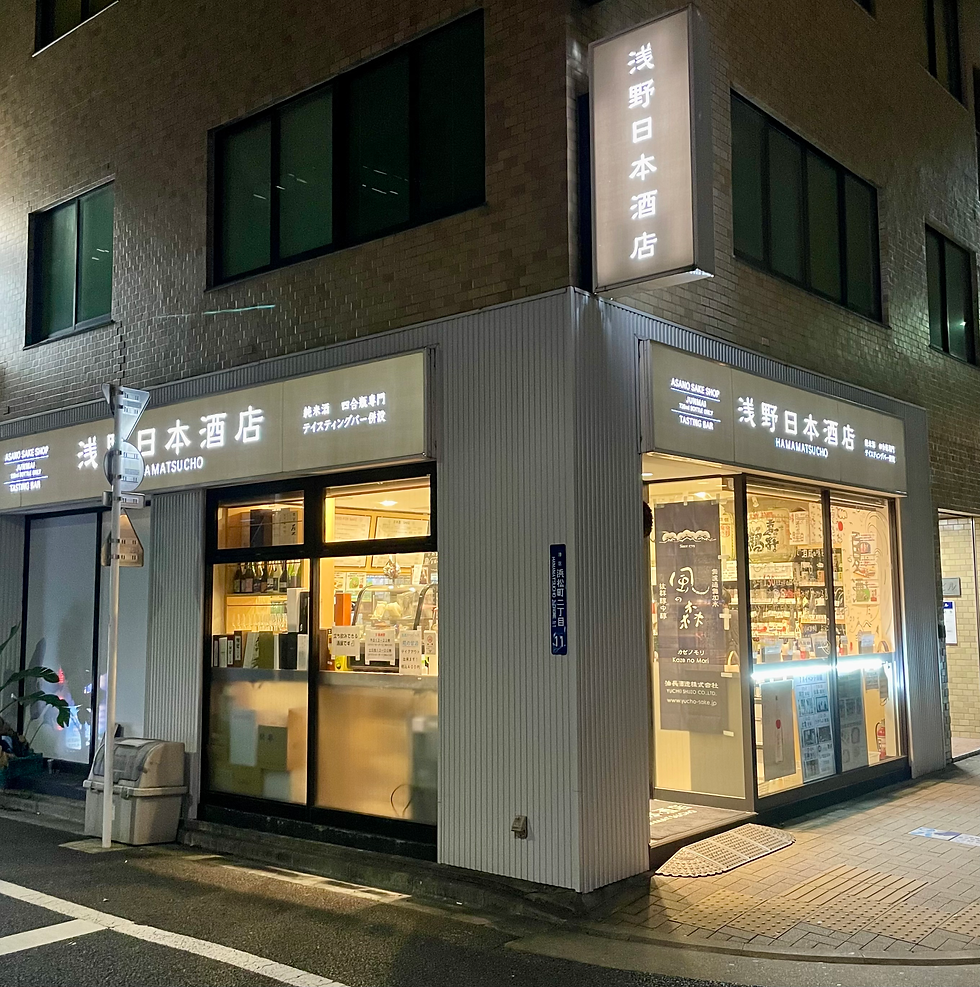Find the Difference at the “Sake Library” : Asano Sake Shop @Hamamatsucho
- larryhira
- Feb 1, 2024
- 2 min read
Updated: Feb 4, 2024
SAKE ingredients are very simple; Rice and Koji (malted rice), period. How can the complexity of sake’s taste be formed by these two? The answer is less simple, because sake's subtle flavour is formed by two more ingredients not shown on the list. One is water, consisting of 80% of the product. Pure and soft water is essential for sake making, which confines the location of sake breweries close to rivers flowing with pure snow water or next to the wells capable of gathering up abundant water.

The other one is Kobo (sake yeast). Sake making has a unique process; both Koji and Kobo are added to rice at the same time, in order to turn rice to glucose via the function of Koji. The Kobo yeast then acts on the glucose to turn it into alcohol. Kobo is mass-produced at the Brewing Society of Japan (Kyokai). The products, named Kyokai Kobo, can be handled so easily and are so stable in quality that most breweries select them conveniently in their sake making process.
But THAT DOESN'T COVER EVERYTHNG.

Asano Sake Shop in Hamamatsu-cho is a sake specialty retailer with standing-only sake tasting bar. Along a wall in a tiny hall is a large refrigerator where dozens of sake bottles are kept. Like visitors selecting favourite books at a library, customers can select bottles from the refrigerator and ask a staff member to fill in their small glasses.
It's good for sake beginners to randomly choose bottles with colourful labels and enjoy them one by one. For sake experts, this is the best opportunity to select a couple of bottles from different regions or breweries to taste the difference and explore the varieties to find the best one.
This time, I tried to find the difference by selecting products with yeasts WITHOUT Kyokai Kobo in their sake making.

Tokyo Agriculture University has developed their original Kobo yeasts derived from flowers. Sunflower Kobo is one of them, and Amabuki brewery from Saga Pref choose it to make their own branded sake. When tasting it, I can't detect any sunflower flavour in their products, but anyway, it's so refreshing and smooth to drink. The brewery picks up another yeast derived from bananas. As expected, the product literally tastes like bananas.

Mainstream breweries also try a variety of Kobo yeasts to develop new brands. Shirataki brewery from Niigata Pref is experimenting with Kobo derived from honey, and Echigo Tsurukame, also from Niigata, converts yeast designed for making wine into sake making. Honey yeast creates a sweet afternote and the one for wine produces a minerally taste in sake, both successfully can transfer their originality to the products.

As such, even though Kobo yeast does not remain in an ingredient label on the final product, it surely contributes to an aroma and a taste unique to the product. I truly appreciate Asano Sake shop for giving me a valuable opportunity to taste such a variety of sake. This is literally a "Sake Library". Next time, I will try to select bottles with different making methods, say Nama-shibori, Yamahai or Hiya-oroshi and report here how different their tastes are.

Comments